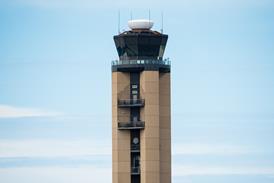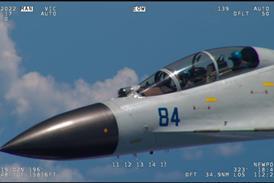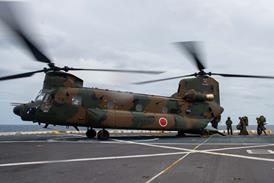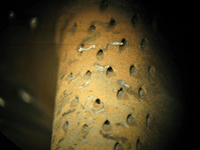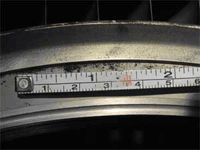Checks performed on a Finnish Boeing F-18 fighter engine have confirmed that contaminants from the Icelandic volcanic eruption did affect the aircraft, but the nation’s air force has concluded that the “ash dust has caused no significant damage”.
Providing the first details of inspection work on a General Electric F404-402 removed from a Hornet which had been airborne in northern Finland on 15 April, the air force says: “detailed examination revealed contaminants on its inside surfaces.”
Conducted at Patria’s Linnavuori facility, the checks found dust spots, magnetic ash, molten metal and glassy deposits on components including high-pressure turbine guide vanes and nozzle assemblies, plus low-pressure turbine blades and compressor guide vanes.
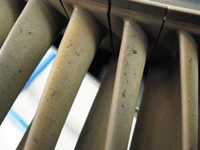 | 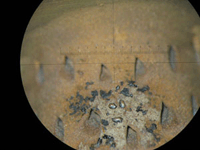 |
|---|---|
|
|
|
© Finnish air forceChecks performed at Patria’s Linnavuori facility on a Finnish Boeing F-18 fighter engine have confirmed that contaminants from the Icelandic volcanic eruption did affect the aircraft but "caused no significant damage" | |
“Analyses of dust accumulated on aircraft surfaces and samples obtained from engine components are not available yet,” the service says, with the work being performed by the Finnish defence forces technical research centre.
However, it notes that elements including aluminum, iron, magnesium, silicon, and sulphur have been found in air samples gathered using two BAE Systems Hawk jet trainers carrying monitoring equipment.
The air force says engine components which show the effects of foreign materials will be replaced as a safety measure. “Removed components will be subjected to detailed analysis, and their continued serviceability is to be decided later,” it adds.
Engines from all five F-18s airborne on 15 April have been examined both visually and by boroscope.
Meanwhile, the service also removed the Rolls-Royce Adour engine from one of its Hawks tasked with the air-sampling mission, “due to findings discovered during post-flight inspection” of the aircraft after a sortie flown on 18 April. The engine was also examined by Patria, and “initial findings are consistent with those in the F-18 engine, yet less significant,” the air force says.
The service cleared its piston-engined types to resume flight activities from 20 April, and began a gradual resumption of training sorties with its fast jet and turboprop aircraft the following day.
Source: FlightGlobal.com



